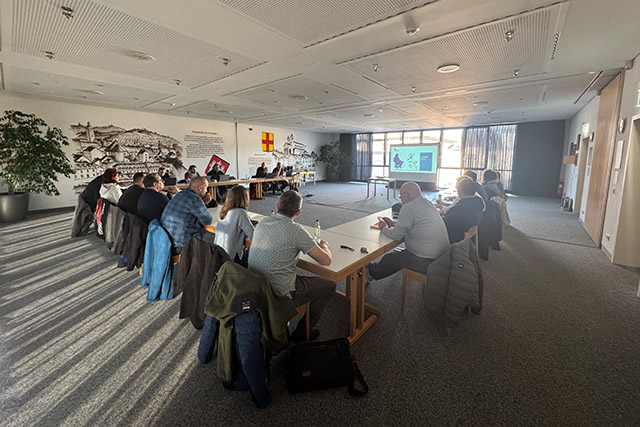The ecological services of the eleven member municipalities of the PRO-SUD syndicate, which manages the Minett UNESCO Biosphere, met last Thursday in Pétange. The main focus of the meeting was an often overlooked environmental issue: the impact of light pollution on our nocturnal biodiversity.
A Threatened Natural Heritage
A recent study carried out for the Ministry of the Environment, Climate and Biodiversity was presented by Jan Herr of the Nature and Forest Administration (ANF). It reveals a concerning situation in the protected natural areas of the Minett.
The south of Luxembourg is home to an exceptional ecological richness, with no less than 870 species of nocturnal moths that depend on a dark environment for their survival. Bats, which use the old mines as hibernation and breeding sites, are also threatened by increasing light pollution.
In particular, the phenomenon of ‘sky glow’ – the artificial light that illuminates the night sky – disrupts ecosystems by luring insects away from their natural habitats.
 |
 |
 |
Concrete Solutions for Responsible Lighting
Daniel Gliedner, lighting consultant for the Our Nature Park, then explained his work to the local authority representatives. He advocates a pragmatic approach to night-time lighting based on two simple principles: only light when necessary and only light what needs to be lit. This strategy is structured around four main axes:
- Control of light intensity
- Optimization of radiation geometry
- Attention to color temperature
- Intelligent management of lighting schedules
Discussions on Action Possibilities
Following the two presentations, the representatives of the ecological services exchanged ideas on possible actions to combat light pollution. In addition to raising awareness, concrete measures were discussed that will be developed jointly by the ANF, the Minett UNESCO Biosphere and the eleven municipalities, with a view to proposing them to the region’s elected representatives.
For more information on good lighting practices, visit www.liichtberodung.lu.



